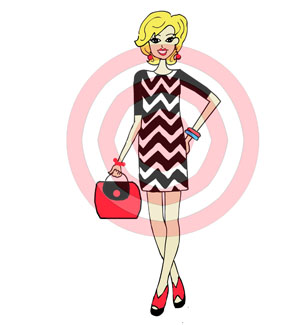 As always, when working with a prospective new retailer. I asked “Who will be your target customer?” Amazingly, she looked at me and immediately said, “Everybody!” At first I almost laughed, but when I realized she was serious, I also knew we were in trouble.
As always, when working with a prospective new retailer. I asked “Who will be your target customer?” Amazingly, she looked at me and immediately said, “Everybody!” At first I almost laughed, but when I realized she was serious, I also knew we were in trouble.
One of the first mistakes most retailers make is trying to be “everything to everybody.” It’s kind of like in life, when we want everybody to like us – that doesn’t happen in the real world. There are a certain number of shoppers who will buy from you. Many things go into this reasoning, but it is a definite fact. Assuming that you can satisfy everyone causes overbuying, incorrect buying, wrong pricing, and ineffective advertising and marketing.
A specialty shop is exactly that; it is a store that specializes! You need to determine your customer, your product and your niche, before you begin. Knowing who YOU are, is the first and most important part of equation. Remember that shoppers, especially women, buy things to make themselves feel good. Nobody is running around naked. It is not life or death that that black dress hangs in their closet. People buy things to (1) satisfy their basic needs, to (2)solve their problems, and to (3) just make themselves happy. A specialty clothing store falls in the third category. Basic needs can be met at Goodwill; problems can be solved at Sears. You are the “make me feel good” place they want to be in. Your service and product creates the image they want to portray to others. As I like to say, “You don’t just fill bags, you fulfill dreams!”
So let’s find that target customer. Look around your area. How big is your prospective market? Draw a circle that spans 50 miles, and see how many people live within an easy driving distance of your store. Don’t overestimate, be realistic. What number did you find? 30,000? 50,000? 10,000? Now let’s separate those folks into demographic groups and market segments.
- Age: children, teens, young, middle, elderly
- Gender: male, female
- Education: high school, college, university
- Income: low, medium, high
- Marital Status: single, married, divorced
- Lifestyles: active, working, retired
In most communities some of this information is made available through the Chamber of Commerce or Downtown Development groups. Realtors or your landlord should be able to help you with this. Once when working with a client, their realtor told me how many cars passed the location in each hour of each day of the week. Amazing statistics!
With this information, can you now give me description of your potential customers? Such as, “She is 35-50 years old, middle income, married with children, and works outside the home.” Ok, that’s a good start. Next determine how many people within your area fit that description, and then calculate approximately how many would be interested in shopping with you. Don’t forget you are the new kid on the block, and the majority of these people are already loyal shoppers at other businesses. Some will give you a try; others will ignore you for a while and then come; others will never set foot in the door. Reasons may range from personal to financial.
This is where marketing begins. It is your job to entice them to come on in.
T.J. Reid is editor of FASHION ADVANTAGE magazine, and can reached at tj@tjreid.com.


